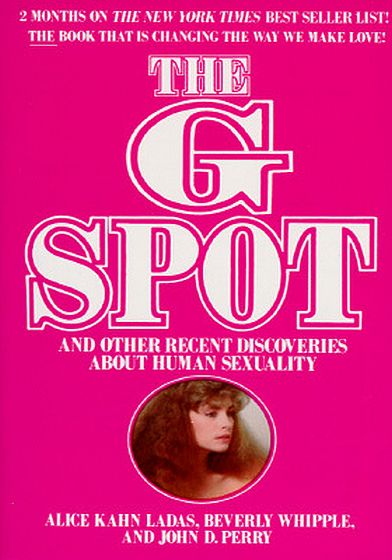

| THE G SPOT and Other Recent Discoveries About Human Sexuality Alice Kahn Ladas, M.S.S., Ed.D. Beverly Whipple, R.N., M.Ed. John D. Perry, M.Div., Ph.D. New York: Dell, 1982 |
Rating: 5.0 High |
|||
| ISBN-13 978-0-440-13040-6 | ||||
| ISBN 0-440-13040-9 | 236pp. | SC/GSI | $3.50 | |
Despite its somewhat tittilating title (and its PINK cover1), this book is sex explanation, not sexploitation. Yet while it is a sober, honest account, it is exciting. This is because of its content. New information opens new possibilities; and new possibilities are always exciting. Indeed, some of the new information it provides destroys some misconceptions, and thus may relieve many of guilt or embarrasment.
There is a sense, however, in which these discoveries are not new, since they were known in certain cultures and to certain individuals. But to Western European culture, and especially to American medical practice, they have been largely unknown until recently.
The authors wisely do not dwell on the conundrum of why doctors could remain ignorant of demonstrable facts known to many of their patients. That is a matter for another book. Their purpose here is to disseminate their discoveries. Briefly, those are:
The book goes into great detail about all these discoveries, often illustrating the implications by means of case studies. The authors' purpose is to de-mythologize sex in order that people will achieve healthier sex lives. I judge that their book fulfills that purpose.

 To contact Chris Winter, send email to this address.
To contact Chris Winter, send email to this address.